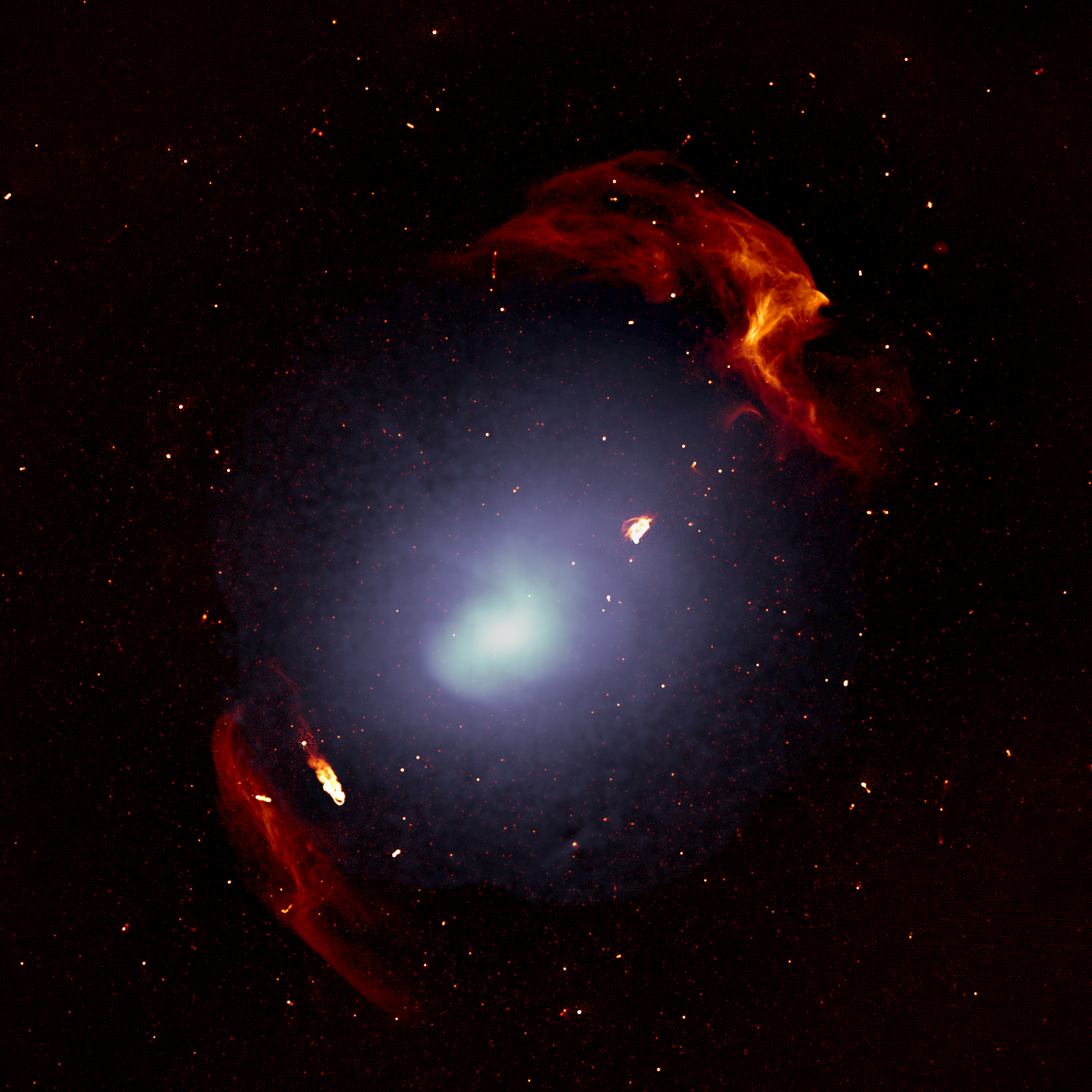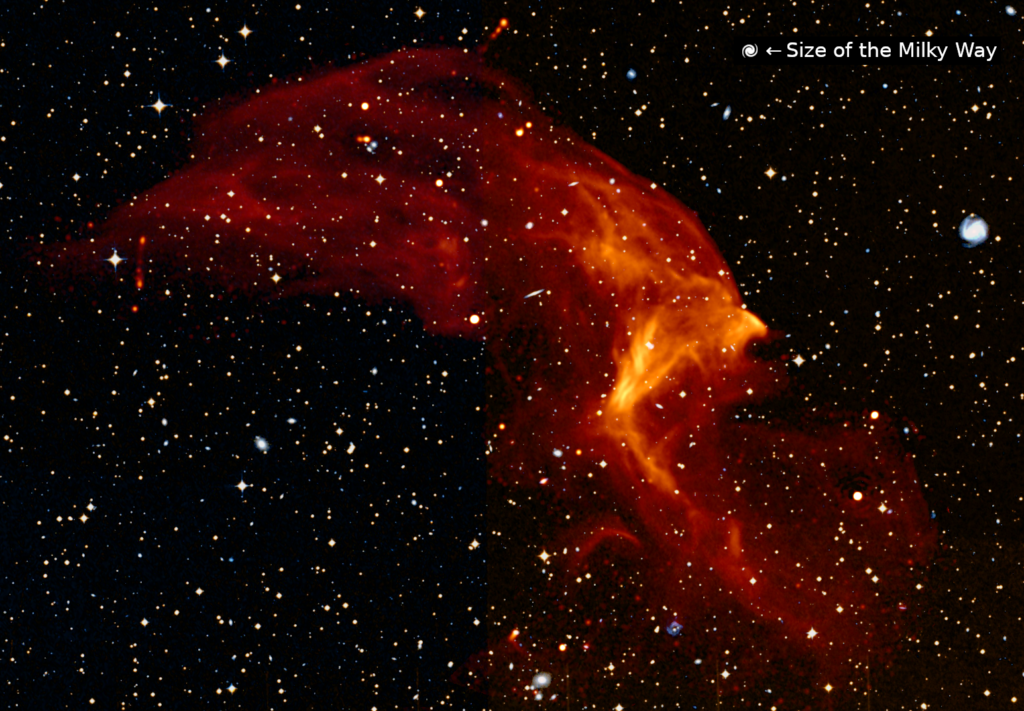Don’t you just love it when South Africa gets something right? An international team of astronomers working at SA’s MeerKAT radio telescope facility has found something remarkable out in space. And not remarkable as in Don’t Look Up remarkable.
But it is mighty impressive, nonetheless. The team used MeerKAT to image the single largest cosmic shockwave ever observed. How large is it? You saw the headline, but we’ll say it again. The shockwave is 6.5 million light-years across. That’s large enough that the entire Milky Way is barely a blip next to it.
Fear the mighty MeerKAT

There are two visible shockwaves, with the largest of the pair clocking in at 6.5 million light-years across. The smaller is… well, smaller. These shockwaves are moving at an impressive 1,500km/s — that’s blindingly fast. They were formed by the collision of two galaxy clusters that created another cluster called Abell 3667. It is this cluster that researchers used MeerKAT to investigate.
Professor Francesco de Gasperin, of the University of Hamburg and INAF (Italy’s National Institute for Astrophysics), explains, “The shock waves act as giant particle accelerators that accelerate electrons to speeds close to the speed of light. When these fast electrons cross a magnetic field they emit the radio waves that we see. The shocks are threaded by an intricate pattern of bright filaments that trace the location of giant magnetic field lines and the regions where electrons are accelerated”.
Do we need to worry about it? Nah. There’s enough of that going around. It’s more than a little cool that South Africa’s own MeerKAT facility, destined to eventually become part of the Square Kilometre Array, was responsible for imaging it, though. It feels good to have contributed to the advancement of science.




